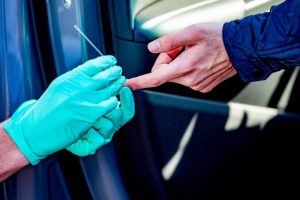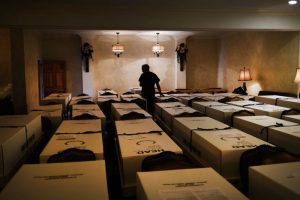#MustRead
Two thorough reports regarding current COVID research.
- ProPublica: ‘What Antibody Studies Can Tell You – and More Importantly, What They Can’t’, by Caroline Chen
- New York Magazine: ‘We Still Don’t Know How the Coronavirus Is Killing Us’, by David Wallace-Wells
Caroline Chen:
‘Bear with me here as we wade through some jargon, because I think it’s worth your time. So far, the death rates you’ve seen in headlines have largely been casefatality rates, which are the number of deaths reported divided by the number of cases confirmed with a diagnostic test. That’s all we’ve been able to report so far. You should expect the case fatality rate to be higher than the infectionfatality rate, because there are way more people infected than people who have been able to be tested. We’ll get back to what we’re learning about the infection fatality rate in available studies later on, but for now, just know that this is one reason why sero-surveys are so useful to us.
But there’s more you can learn from a sero-survey. Dan Larremore, an assistant professor at the University of Colorado Boulder, whose recent work has focused on designing antibody surveys, said you can use sero-surveys to find out if there are certain neighborhoods that have been harder hit than others. Or, by surveying specific populations, you can study questions like: “How much transmission is there within a household?” or “What’s the role of kids in all of this?”
To do that properly, researchers need to test a random sample of the population.
The ideal way to conduct a sero-survey, according to Natalie Dean, assistant professor of biostatistics at the University of Florida, would be to randomly select addresses from a database of the population you want to survey and then send a team of researchers door to door to collect samples. The World Health Organization’s guidance for such studies recommends inviting all people who live in the household to participate in the study, including children.
In order to achieve herd immunity, scientists say that a community would need to have at least 60% of its population infected. That’s the lowest estimate I’ve been told. Other scientists have told me 80% to 90%. The reason this percentage isn’t precisely known is because it depends on things like exactly how contagious the virus is and also whether people who have been infected are immune forever, or if they lose immunity after a while, which researchers also are furiously working to figure out.
As antibody tests become more widely available, there’ll naturally be a temptation to start using the tests for ourselves on an individual basis, to determine if we’re immune and can go about our lives, free of the paranoia and fear that have been plaguing us for the past two months.
But it’s too early for that.
Besides the issue of potential false positives, scientists haven’t yet figured out exactly what level of protection an individual has after being infected and whether the protection lasts forever (like with chickenpox) or wanes after a while. The World Health Organization issued a scientific brief last week warning that detection of antibodies alone shouldn’t serve as a basis for an “immunity passport” allowing an individual to assume they are totally protected from reinfection.
David Wallace-Wells:
‘The disease itself appears to be shape-shifting before our eyes.
“Despite the relentless, heroic work of doctors and scientists around the world. There’s so much we don’t know.”
One month ago, as the country went into lockdown to prepare for the first wave of coronavirus cases, many doctors felt confident that they knew what they were dealing with. Based on early reports, covid-19 appeared to be a standard variety respiratory virus, albeit a very contagious and lethal one with no vaccine and no treatment. But they’ve since become increasingly convinced that covid-19 attacks not only the lungs, but also the kidneys, heart, intestines, liver and brain.
t’s not unheard of, of course, for a disease to express itself in complicated or hard-to-parse ways, attacking or undermining the functioning of a variety of organs. And it’s common, as researchers and doctors scramble to map the shape of a new disease, for their understanding to evolve quite quickly. But the degree to which doctors and scientists are, still, feeling their way, as though blindfolded, toward a true picture of the disease cautions against any sense that things have stabilized, given that our knowledge of the disease hasn’t even stabilized. Perhaps more importantly, it’s a reminder that the coronavirus pandemic is not just a public-health crisis but a scientific one as well. And that as deep as it may feel we are into the coronavirus, with tens of thousands dead and literally billions in precautionary lockdown, we are still in the very early stages, when each new finding seems as likely to cloud or complicate our understanding of the coronavirus as it is to clarify it. Instead, confidence gives way to uncertainty.
In the space of a few months, we’ve gone from thinking there was no “asymptomatic transmission” to believing it accounts for perhaps half or more of all cases, from thinking the young were invulnerable to thinking they were just somewhat less vulnerable, from believing masks were unnecessary to requiring their use at all times outside the house, from panicking about ventilator shortages. Six months since patient zero, we still have no drugs proven to even help treat the disease. Almost certainly, we are past the “Rare Cancer Seen in 41 Homosexuals” stage of this pandemic, but how far past?
https://nymag.com/intelligencer/2020/04/we-still-dont-know-how-the-coronavirus-is-killing-us.html


Leave a Reply